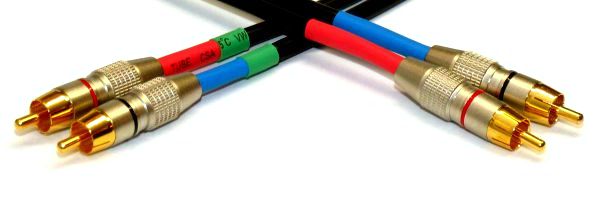

Now Available in No-Frills Garb
- only
AUD $120.00
*Free
Postage - Money Back Guarantee for those who want to try.
The JLTi Interconnects
Much pseudo-scientific
nonsense is written about cables and much of it has been debunked in Allen
Wright's excellent SuperCables CookBook (see www.vacuumstate.com). What if
we could apply down to earth engineering combined with good knowledge of
materials, reducing microphony along with non-linear storage effects (low
capacitance and inductance) and also apply what constitutes good cable
geometry. These are not great secrets, but simply a matter of good
execution, just as much as design of amplifiers and speakers. This is not
to say that we can predict outcomes by 100%, but we can get the design
into a known ballpark and then fine tune from there. Just the same way
that many other good products are developed. No artificial explanations
are required.
Construction:
The JLTi Interconnects
are made of an inter-twined cable loom, using a combination of silver and
copper. This is to reduce inductance, capacitance and also improve
resistance to external signals. Peculiarly, this cable is NOT shielded and
for good reasons. The actual signal carrying is done by 250-micron thick
conductors individually insulated by PVDF, a thermoplastic polymer similar
to Teflon. This is air excluding, non-porous and anti-corrosive. It is a
fact that many cables deteriorate with time because the insulation does
not protect from corrosion. This was confirmed to us by A. J. van den Hul
(a former teacher of physics) during discussions we had some years ago.
In line with work done by Professor Malcolm Omar Hawksford, University of
Essex, this cable has linear propagation and linear losses up to and
beyond 60Khz. This cable is constructed in accordance to scientifically
established principles and experience gained over nearly twenty years.
Finally, the critical signal carrying elements have been cryogenically
treated. This homogenises the molecular structure (thermal stress relief)
of most metals and many forms of plastics. It is used extensively in
aeronautics, Formula One and even in optics. The physics and principles
governing cryogenics are firmly established. This treatment will be more
common in the future as high-end cable manufacturers starts to realise the
significant sonic benefit.
Applications:
The JLTi
Interconnect is primarily designed for "Line Level" signals, such as
sources like CD Players and Tuners; also between Preamps and Power Amps.
It can also be used in very low signals such as for Moving Coil and Moving
Magnet cartridges. But this must be tested in the actual system and your
dealer will be helpful here.
Even with the lowest output Moving Coils,
there have been successful combinations and without added hum and noise.
This is testament to how the geometry of the cable has a significant
shielding effect, yet without an actual shield (due to "Common Mode"
rejection). This lack of shield does contribute towards sonic excellence
as it reduces non-linear storage effects within the cable.
Sound:
How to describe the sound? Very
even-handed and holistic. It has great focus and is refreshingly clear and
clean across the whole spectrum. While the treble does not stand out, it
is highly resolving without any artificial 'glaze' that poor cables have.
There is no mid-bass bloat, no chocolate colourations nor the ‘chrome
plating’ that some very expensive cables are guilty off. Transient
response and micro-level detail is present in abundance but never
exaggerated. Midrange purity and over-all tonality is of the highest
order. Make no mistake; this is a cable that will perform in systems of
the highest level, and yet also contribute in more modest situations.
Final
Instructions:
In use, please handle cable with
care. You will notice that they feel very light, as if there is mostly air
inside. Please, use the body of the plug to insert and unplug. Please,
never pull by the delicate cable itself. If used with care, this cable
will continue to perform for years to come without gradual reduction in
performance, which is all but too common with many other interconnects.
One end of the cables have has Green Markers. Make sure these are
connected at the same end. There is no specific cable directivity. But it
is recommended with source components that the marker end be on the
inputs. When used between Preamp and Power amp, then connect marker to the
Preamp outputs. You may experiment in reverse as long as the markers stays
the same end. We wish you pleasure and enjoyment.
Specs:
|